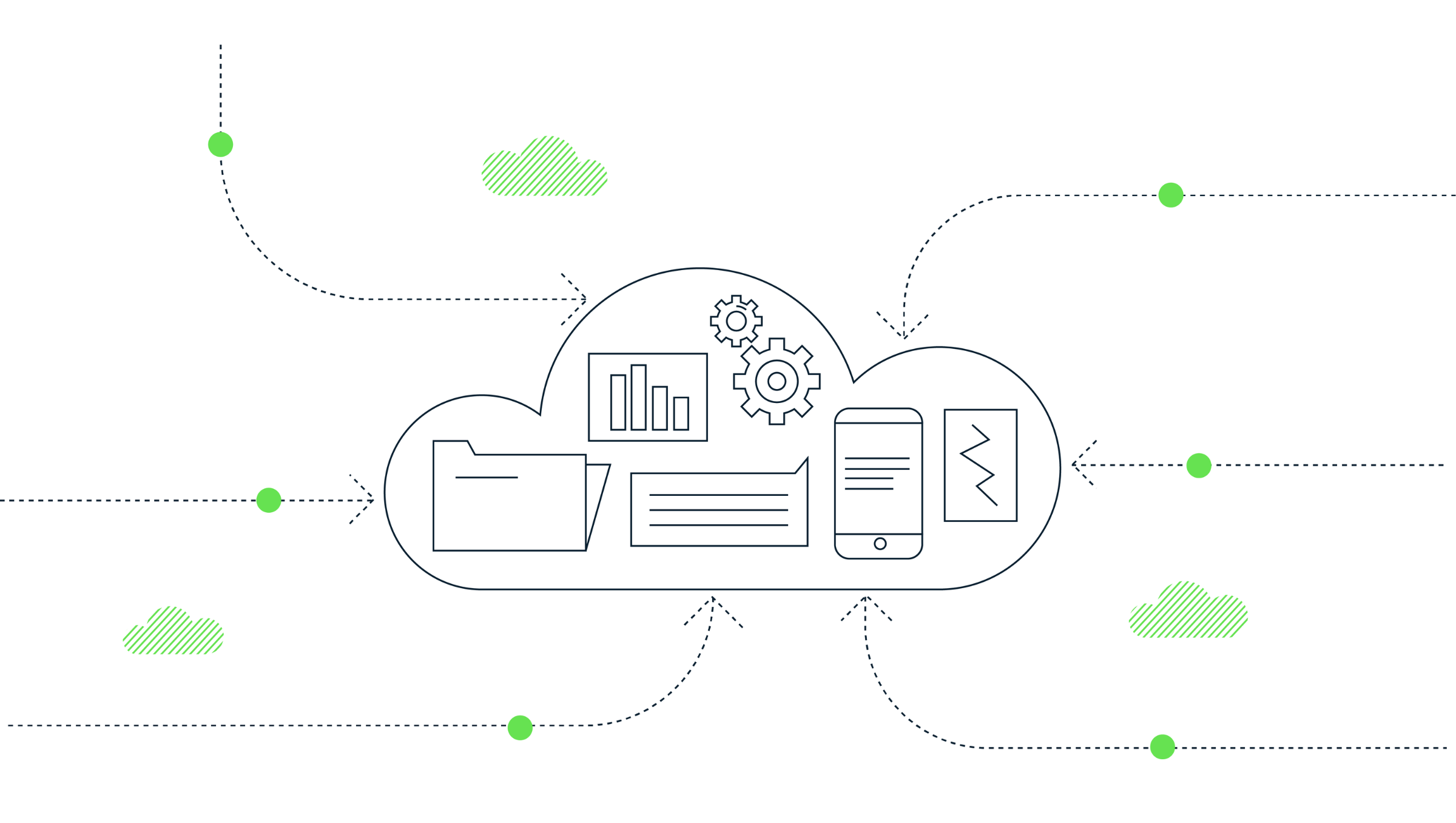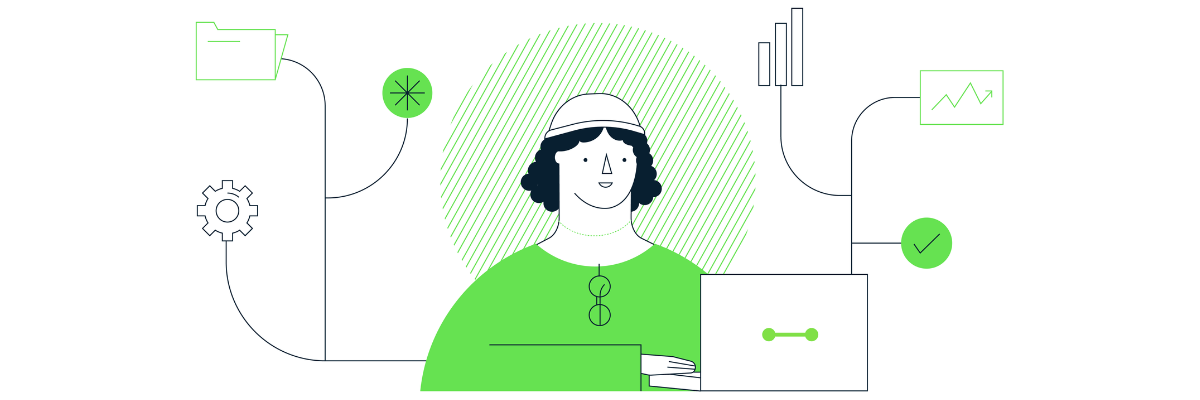Why migrate to GA4? Your data may not be as good as you think

Better the devil you know?
The new, improved Google Analytics 4 is here (GA4 to its friends). You may be asking yourself: why bother? What’s wrong with what we’ve got? Is a migration really worth all the disruption?
Rightfully so. We marketers need to learn to resist the lure of the bright shiny object.
Few tools in the martech stack are as tried-and-trusted as the current version of Google Analytics. It’s as close to an industry standard as it’s possible to get. A faithful old friend. And trust matters when it comes to data. We’ve all come to rely on its reports. The KPIs are consistent, and goddamit you’ve only just managed to convince everyone bounce rate really isn’t important.
What’s more, analytics resources are precious. Every hour your team spends migrating a platform could be spent delivering real value: analysis, interpretation and optimisation recommendations. Even “free upgrades” come at a price.
What’s in it for them?
There’s always going to be a degree of suspicion when someone gives you something for nothing. If you’re not paying for the product, you probably are the product. Or, you’re going to be compelled to buy more of another product. Is this a part of Google’s master plan to monetise its ubiquitous analytics platform? Will you be locked into the Googlesphere for eternity? Dangnammit, is close to half your paid media budget not enough!
Google isn’t evil (we work with them, they’re actually lovely). True, they’d like us all to spend more through the Google Marketing Platform. But that brings with it an imperative to demonstrate any additional investment yields a higher ROI. They don’t win unless they can prove you’re winning.
From Google’s perspective, trying to persuade loyal customers to abandon a product they’re largely happy with carries risk. Particularly as migrating to GA4 means making an entirely fresh start – it carries over zero legacy data. Who’s to say marketers won’t take the opportunity of a clean break to consider their options? Those Adobe reps are pretty persistent, after all.
GA4 is not the change
Let’s face it, Google Analytics was due an upgrade. The current iteration – Universal Analytics, or UA – has been around for nine (yes, 9) years. And even that was only a superficial upgrade on Google Analytics Classic. You’re basically relying on a technology which pre-dates the iPhone!
While GA4 is fundamentally different in terms of how it collects and presents data, ultimately the product itself is not the change. GA4 is a reaction to the change around us. Specifically, rapid advancements in marketing technology and some seismic shifts in consumer attitudes and behaviours.
Together, these changes mean the data you’re basing your decisions on may already not be as complete and reliable as you think. And it’s only going to get less so. The punchline: the risks of sticking with UA will soon be greater than the momentary pain involved in migrating.
An incomplete picture
That’s a bold claim. But chances are, you’ve already encountered some frustrations with the limitations of Google Analytics and the occasional inconsistencies in the data it produces. Let’s take a closer look at some of the factors undermining our collective confidence.
Dynamic web experiences
Take the web page. What a quaint concept. An unhelpful hangover from the days when websites were simply digitised brochures or catalogues. When websites were static, page views actually meant something. The world (wide web) has moved on. Now page views are of less and less value as an indicator of interaction.
Websites are increasingly dynamic. With more page elements personalised according to the user’s source, profile and past browsing history, no two pages are the same. That’s before we take into account the user’s viewport – 37” wraparound monitor or 6” phone screen? What use is a page view count for a dynamically-hosted one page website or single page application (SPA)?
GA4 uses an “event-based” data model so it can accurately track the performance and relative contribution of each individual page element, with every version and variation you might wish for. You can actually measure the lived experience, rather than a proxy.
Movement between app and web
If you have a website (who doesn’t?) and an app, you’ll have likely spent countless hours wishing you knew how users moved between the two. Incomplete and interrupted journeys. Many blind spots. Much hand-wringing.
Google’s Firebase Analytics product and Universal Analytics (GA3) have very different data schemas that make combining and comparing data almost impossible. It doesn’t help when – as we frequently encounter – there are different teams or individuals responsible for implementing and managing the two analytics products.
The clues were there for all to see. GA4, the product formerly known as as Google Analytics App+Web, is essentially built on Firebase. That means it will be way easier to connect data in order to get a complete picture of user behaviour. Where once we were blind, we will now be able to see. Hallelujah.
Missing persons
In civilised Europe we have long had to politely ask before placing cookies on a user’s browser for tracking purposes. GDPR and the ePrivacy Directive adding serious consequences. Progressive California enacted the CCPA, and now even Brazil is getting in on the “act” with the LGPD (Lei Geral de Proteção de Dados – but you knew that already).
While many users tacitly accept cookies without thought (guilty), increasing numbers of privacy-sensitive souls are reading the small print and choosing to opt out of all but essential cookies. Incognito-a-go-go. As cookies are more routinely cleared and their lifespan shortened, those using Universal Analytics are going to find themselves with a gaping black hole in their data, analysing a rapidly shrinking universe.
It’s fair to say the cookie is crumbling. Fast-following other “privacy-first” platforms, Google has signalled the end of third-party cookies in its Chrome browser. Individual tracking and targeting will soon be a thing of the past.
“Today, we’re making explicit that once third-party cookies are phased out, we will not build alternate identifiers to track individuals as they browse across the web, nor will we use them in our products.”
GA4 will help plug some of these gaps in your visitor data through machine learning. The more training data you can start collecting, the more accurate the algorithm. Keep calm and carry on measuring.
Missed opportunities
With so much data being captured and processed, building and automating reports can be a full-time job that leaves analysts precious little time to mine for insight and opportunity. Who knows how many pounds sterling have been left on the table? Probably best not to dwell on it.
The good news is GA4 opens all this data up to artificial interrogation. The Google machine can observe, learn and predict; inbuilt models finding value in the data that might well be invisible to the naked eye of an analyst. Have we sown a seed of doubt in your data? Quite possibly, but Universal Analytics is not a burning platform you need to leap off right away. So what’s the inflection point, or trigger that makes a move to GA4 worth considering?
The migration myth
Here’s the thing. Right now you don’t have to “migrate” to Google Analytics 4 at all. In fact a wholesale migration is completely inadvisable. What’s important, is that you create a GA4 property and start dual tracking at the earliest opportunity. And this is dead simple. There’s no need for a GA4 migration plan, roadmap or budget allocation. It’s so easy, you may be surprised to learn some bright spark has already just gone ahead and done it.
Once it’s set up you don’t have to do anything else. Sit back and let the data accumulate. It may not be capturing all the custom events you’d ideally like to track, but when you’re ready to make the transition to using GA4 as your primary analytics platform, you’ll at least have some historic data with which to establish baselines.
In the meantime, if you’d like to get an introduction to the capabilities of GA4, or explore how you might begin to take advantage of the native BigQuery connector, we have a GA4 training course that could be of interest. If you’re excited by the opportunity to start afresh and want to get your GA4 implementation right first time, speak to one of our analytics consultants today.
Steven Elliott
Subscribe to our newsletter:
Further reading

How to extract GA4’s event sequencing in BigQuery using the new batch fields

What is offline event data import in GA4?
